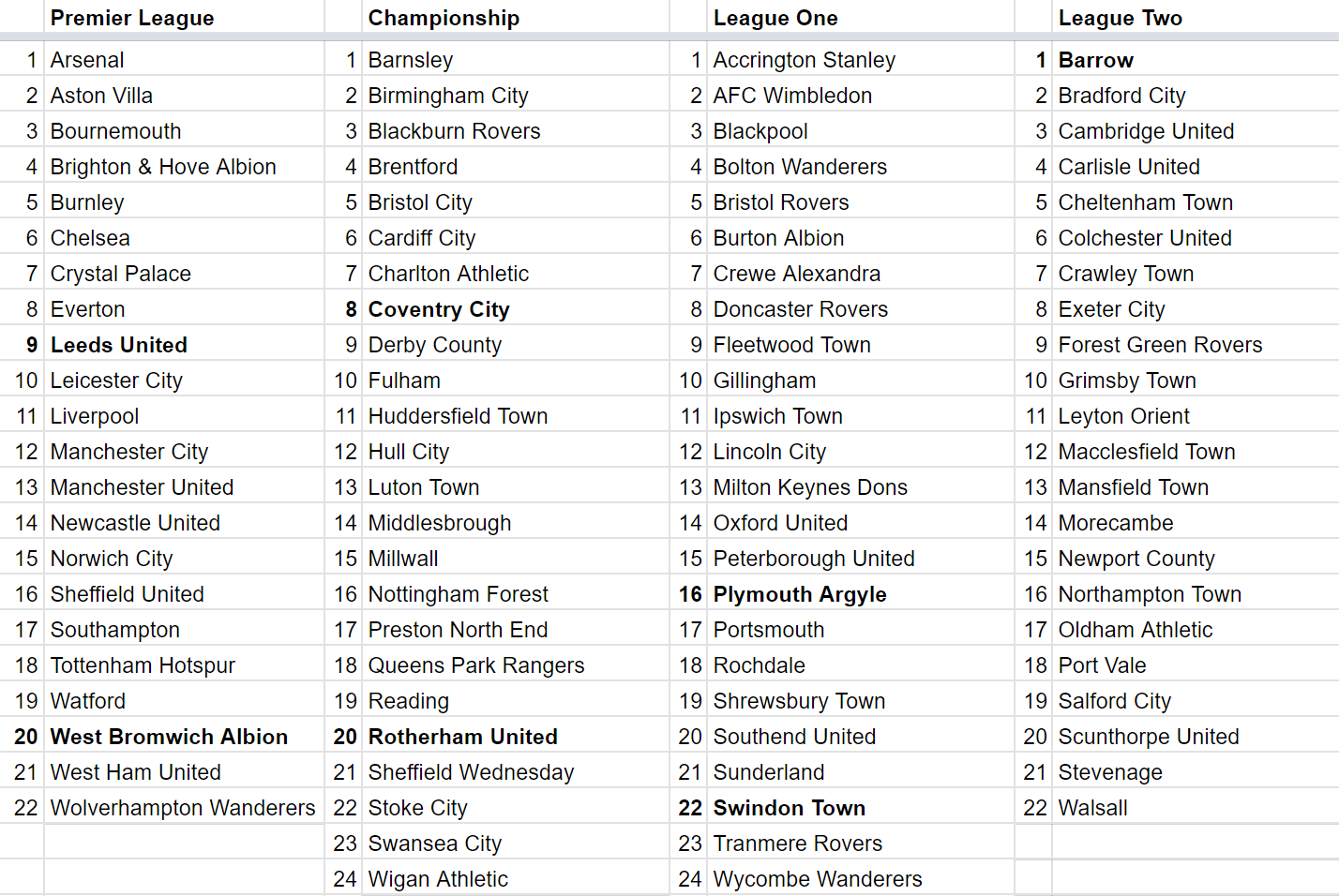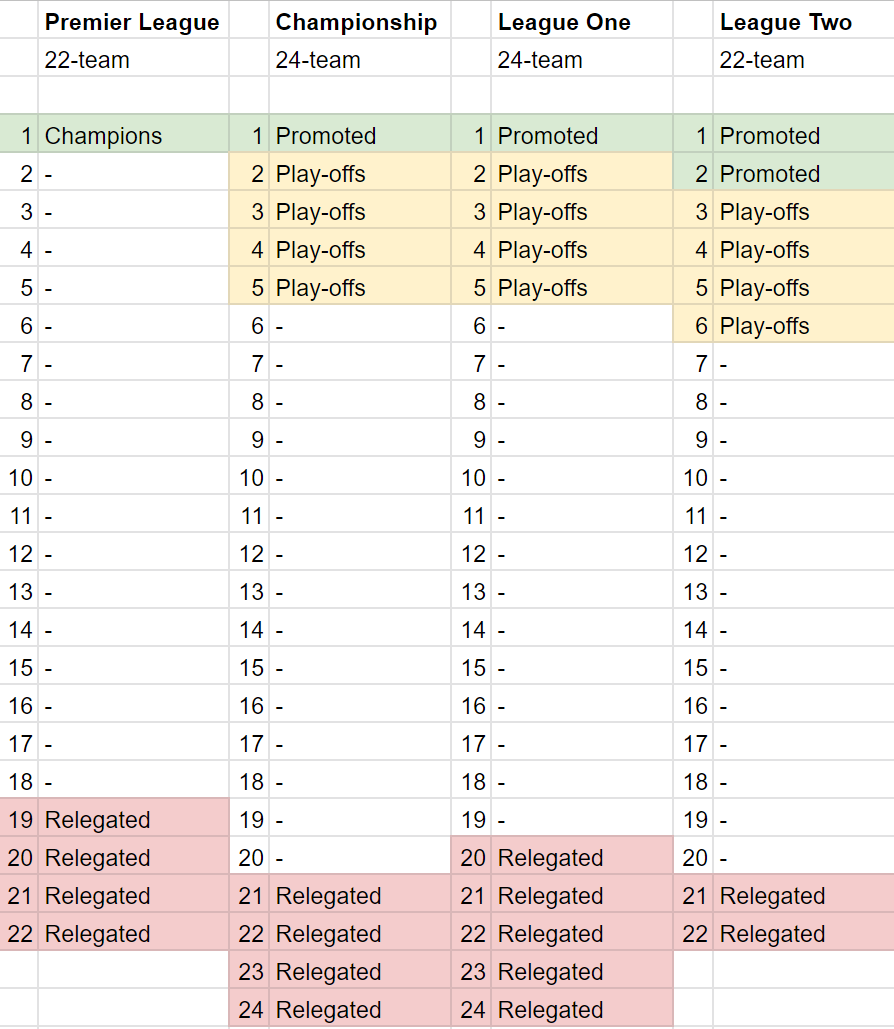Coronavirus: Why English football in 2020-21 could look a lot like 1994-95
Promoting teams without relegation in England's top four divisions is a possible solution
The world of European football faces one of the most momentous weeks in its modern history following a mass postponement of fixtures across the continent due to the coronavirus.
The Premier League and the EFL was suspended until the start of April last week after players and staff at several clubs either displayed symptoms of the virus or were placed in self-isolation.
An emergency meeting of Premier League stakeholders will be held on Thursday to discuss plans for the remainder of the season, with matters such as the title, European qualification and relegation to be resolved.
Much will depend on the outcomes of a Uefa meeting on Tuesday, which will discuss the future of Euro 2020, as well as this year’s Champions League and Europa League.
One of the potential solutions for English football involves enforcing promotion but not relegation, thereby expanding the Premier League to 22 teams with Leeds United and West Bromwich Albion joining from the second tier.
Though no decisions have been taken on how the game in this country could look next season, sources say an expanded top-flight and temporary restructuring of the EFL’s three divisions is a possibility.
What could it look like?

If the plans were to be brought in for the 2020-21 season, they would most likely need to be applied across both the Premier League and the EFL – i.e. at least all of English football’s top four divisions.
This would involve promoting not only Leeds and West Bromwich but also those teams occupying the automatic spots in League One and League Two: Coventry and Rotherham from the third tier; Crewe, Swindon and Plymouth from the fourth.
With National League leaders Barrow promoted to take the place of Bury, who were expelled from League One last August, League Two would become a 22-team division and the Football League’s total number of teams would be restored to the traditional 92.
The proposal would be unpopular with teams who currently occupy play-off positions. Leeds and West Bromwich are fairly comfortable in the Championship – with Fulham six points behind second-place – but in League One, third-place Oxford are only two points adrift of Rotherham.
In League Two, fourth-place Exeter are only three points off Plymouth and the two rivals were due to play at Home Park last weekend, before the announcement of the suspension. The National League is still playing, with second-place Harrogate Town currently four away from Barrow.
There could also be complaints if Bolton, cast adrift at the bottom of League One and near-certainties for relegation after a 12-point deduction for entering administration, were handed an unlikely reprieve by a 'no relegation' principle.
Like arguments to void the season in its entirety or take current standings as final, this option is open to legal challenges from clubs who feel they have been unfairly treated.
Sources close to discussions over what to do admit no option is perfect and that temporarily restructuring in this way would upset those clubs in play-off contention, but there is also a sense that something will have to give if English football is forced into a difficult position.
How could promotion and relegation work?

The make-up and format of the top four divisions would not only need to change in order to respect the incomplete 2019-20 season. They would also look to return to normality in the 2021-22 campaign. A split of 20-24-24-24 teams across the top four divisions would need to be restored.
This could be achieved using the 1994-95 season’s format. That year, Blackburn Rovers won the final 22-team Premier League before the top-flight became a 20-team competition. Four teams – Crystal Palace, Norwich, Leicester and Ipswich – were relegated and only two were promoted.
In the First Division, Middlesbrough came up automatically while Bolton won the play-offs, which included the teams from second down to fifth. As an extra team would drop down from the Premier League, four teams were relegated.
The Second Division also only promoted the league and play-off winners but relegated five. This saw Division Three expanded from 22 teams to 24 the following year, giving the 20-24-24-24 split which has essentially remained in place ever since. If the 1994-95 format was used in 2020-21, the top four divisions return to their old format.
Potential promotion/relegation
2020-21
Premier League: 22 teams; four relegated
Championship: 24 teams; two promoted, four relegated
League One: 24 teams; two promoted, five relegated
League Two: 22 teams; three promoted, two relegated
2021-22
Premier League: 20 teams; three relegated
Championship: 24 teams; three promoted, three relegated
League One: 24 teams; three promoted, three relegated
League Two: 24 teams; four promoted, two relegated
The balance would need to be redressed somewhere, though. With only one team promoted from the National League and no teams mathematically certain of relegation, the fifth tier could be made to run with an odd number of teams in 2020-21, just as League One has during 2019-20 without Bury.
And Bury’s plight is instructive, as any temporary restructuring of English football could be knocked entirely off course by EFL clubs entering financial difficulties between now and the start of any new season.
Many lower league clubs that were already struggling to keep their heads above water will be hit hard by the suspension of league football. They will go without vital gate receipts that they had assumed were guaranteed and some may struggle to meet rising overheads.
The coronavirus crisis is likely to change the face of English football over the next couple of years. It has made a temporary 22-team Premier League one possibility but it also means that a 92-team Football League is no certainty.
Join our commenting forum
Join thought-provoking conversations, follow other Independent readers and see their replies
Comments